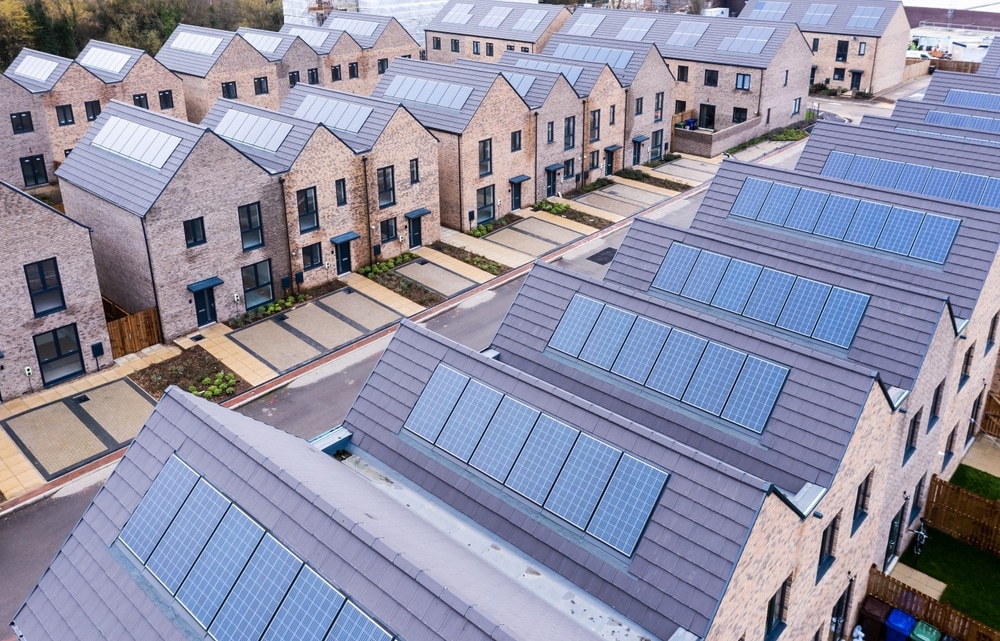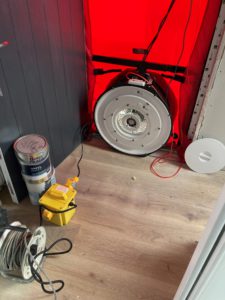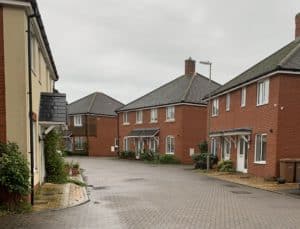As we approach the end of 2024, those of us in sustainable construction are looking ahead with anticipation. The Future Homes Standard is set to come into full force in 2025, marking a crucial step forward in the UK’s journey toward net-zero emissions by 2050. This landmark regulation promises to change the way we design, build, and live in our homes, pushing for greater energy efficiency and a reduced carbon footprint.
We’re taking a closer look at what this standard includes and how it will reshape our homes and communities.
SAVE FOR LATER: THE RISE OF NET ZERO CONSTRUCTION PROJECTS IN THE UK
The Future Homes Standard: a quick overview.
First, what exactly is the Future Homes Standard? Announced by the UK government as part of its commitment to cutting greenhouse gas emissions, the Future Homes Standard mandates that all new homes built from 2025 onwards will be zero-carbon ready. This means they will have minimal carbon emissions from heating, hot water, and appliances, with any remaining emissions offset by renewable energy sources.
The ultimate goal is to ensure that as we move through 2025, all new homes will produce 75-80% fewer carbon emissions than homes built under current building regulations. By focusing on sustainability and energy efficiency, the Future Homes Standard aims to create a new baseline for construction that will benefit both the environment and future homeowners.
What does the Future Homes Standard include?
To meet these ambitious targets, the Future Homes Standard outlines several essential components that developers, designers, and contractors must adhere to. Here’s a breakdown of the main requirements:
1. Improved building fabric.
A significant aspect of the Future Homes Standard is the emphasis on high-quality building fabric, meaning better insulation, windows, and overall construction methods to reduce energy loss. By creating a fabric-first approach, the aim is to minimise energy demand from the outset. For instance:
- Enhanced insulation in walls, roofs, and floors.
- High-performance windows and doors to limit heat loss.
- Reducing air leakage to improve thermal efficiency and comfort.
With a better building fabric, homes will require less energy to maintain comfortable temperatures, cutting down on both utility costs and carbon emissions.
2. Low-carbon heating systems
The era of gas boilers is coming to an end under the Future Homes Standard. Instead, new homes will rely on low-carbon heating systems like:
- Heat pumps (air-source or ground-source), which are far more energy-efficient and have a minimal carbon footprint.
- Heat networks (district heating), where available, to provide sustainable heating solutions for entire neighbourhoods.
This shift is expected to lower the reliance on fossil fuels in domestic settings, reducing carbon output and supporting a greener energy grid.
RELATED: WHY ARE HEAT PUMP INSTALLATIONS DOWN?
AND: WHAT ARE THE MOST ECO-FRIENDLY HEATING OPTIONS?
3. Onsite renewable energy
Many new homes will incorporate renewable energy sources directly into their design. The most common forms are likely to be:
- Solar panels, which can provide electricity for lighting and appliances or help power electric heat pumps.
- Battery storage systems to store any excess energy generated onsite.
These additions not only make homes more self-sufficient but also contribute to lower energy bills for homeowners, further supporting the financial case for sustainable construction.
4. Smarter ventilation and air quality control
Energy efficiency improvements, such as tighter building envelopes, can sometimes affect indoor air quality, so the Future Homes Standard also addresses ventilation needs. Homes will be equipped with mechanical ventilation with heat recovery (MVHR) systems, which recycle warmth from stale outgoing air to heat incoming fresh air. This keeps indoor environments healthy and reduces the energy required to keep the home comfortable.
5. Future-proofing homes for net-zero goals
The Future Homes Standard isn’t just about current emissions reduction—it’s also about future-proofing. By creating buildings that are resilient to climate change and future technology needs, we’re setting ourselves up for the longer-term transition to net-zero.
Why this matters for homeowners and buyers
The Future Homes Standard is a game-changer for anyone looking to buy a new home from 2025 onwards. The benefits of it are abundant, including:
- Lower energy bills: Reduced energy demands and greater efficiency will lower the cost of heating and electricity.
- Increased property value: Homes built to higher environmental standards are likely to be more attractive in a market that increasingly values sustainability.
- Improved comfort: Enhanced insulation and ventilation systems create a healthier and more comfortable living environment year-round.
- Reduced environmental impact: For eco-conscious homeowners, knowing their new home contributes less to climate change is a significant selling point.
However, while the benefits are clear, the Future Homes Standard does present challenges for the construction industry, particularly around cost and skill availability. Retrofitting existing buildings to meet new efficiency standards is costly, and the skills needed for low-carbon technologies, like heat pump installation, aren’t yet as widespread as they need to be.
That’s why training and upskilling in sustainable construction practices are critical over the coming years. As consultants, builders, and architects, we must continue to educate ourselves on these new technologies and techniques to ensure that we’re ready to meet the standard in 2025.
What do the experts think?
Andrew Sadler, Director at Buildpass, says:
“The Future Homes Standard is a bold move that demonstrates the UK government’s commitment to sustainability. As a construction consultant, I see this as an exciting opportunity to redefine what ‘home’ means in the modern world—creating spaces that are comfortable, affordable, and, most importantly, aligned with our environmental values.
With 2024 coming to a close, we’re just months away from a major shift in the industry. By working together and embracing these changes, we can set a new standard for homes that protect our planet and ensure a sustainable future for generations to come.”
Ready to dive into the Future Homes Standard? Get in touch – we’d love to chat and be a part of your journey.
READ NEXT: 6 REASONS TO HAVE AN ENERGY-EFFICIENT HOME IN 2024




















